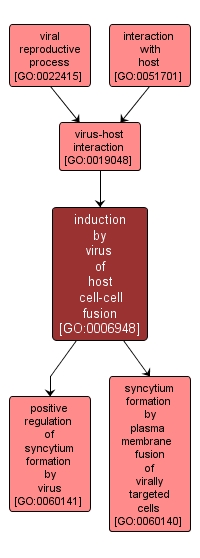GO TERM SUMMARY
|
| Name: |
induction by virus of host cell-cell fusion |
| Acc: |
GO:0006948 |
| Aspect: |
Biological Process |
| Desc: |
The process of syncytia-forming cell-cell fusion, caused by a virus. |
Synonyms:
- induction by virus of cell-cell fusion in host
- viral-induced host cell-cell fusion
- viral-induced membrane fusion
- viral-induced cell-cell fusion
|
|

|
INTERACTIVE GO GRAPH
|














